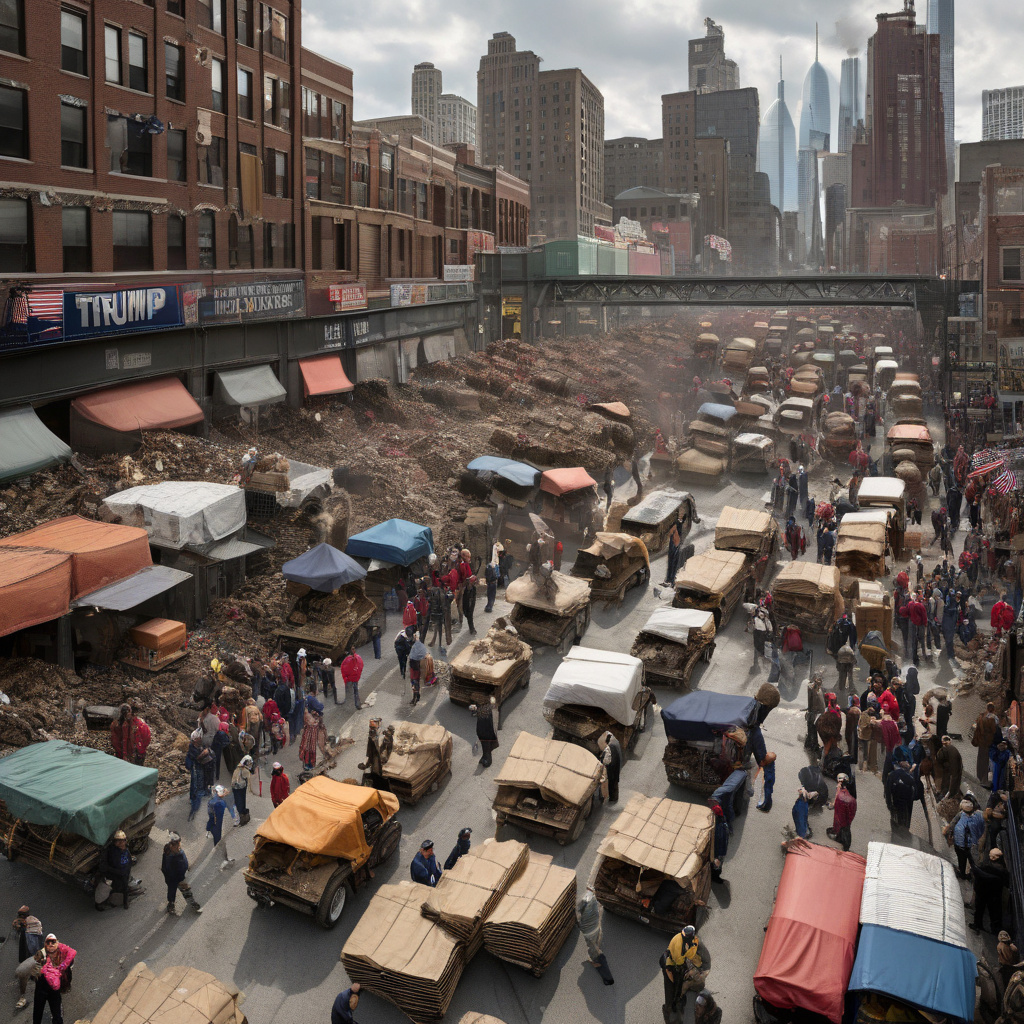Trump’s Tariffs: Assessing the Impact, One Week Later
In the wake of President Trump’s recent tariffs on imported goods, the fashion industry is grappling with a whirlwind of changes. The initial shock of the announcement has begun to fade, leaving businesses, retailers, and consumers to assess the implications of these new economic policies. As fashion companies navigate this uncharted territory, it is essential to examine how these tariffs are reshaping the landscape and what strategies are emerging to adapt to this evolving environment.
The tariffs, aimed at curtailing imports and bolstering domestic production, have significant ramifications for fashion businesses that rely heavily on global supply chains. Many companies import fabrics, accessories, and finished garments from countries like China, Mexico, and Vietnam. With tariffs now in place, the cost of these goods is set to rise, leading to increased expenses for businesses already operating on thin margins.
One week after the tariffs were implemented, the fashion sector is beginning to draw up plans to mitigate the impact. Retailers are holding urgent meetings to reassess their supply chains, explore alternative sourcing options, and recalibrate their pricing strategies. For instance, companies are now evaluating the feasibility of shifting production to countries less affected by tariffs or investing in local manufacturing capabilities. Brands that previously relied on overseas production may find it advantageous to bring some of their operations back to the U.S., despite the potential for higher labor costs.
Additionally, the immediate response from the market reveals that consumers are already feeling the ripple effects of these tariffs. Many retailers are faced with the dilemma of absorbing the additional costs or passing them on to consumers. A survey conducted shortly after the tariff announcement indicated that nearly 60% of fashion retailers plan to increase prices to offset rising costs. This could lead to a decline in consumer spending, as shoppers may react negatively to higher price points. Brands risk alienating their customer base, especially in an era where competition is fierce and alternative options are readily available.
Moreover, the impact of these tariffs extends beyond pricing. Fashion businesses are also concerned about inventory management. With tariffs in place, retailers are incentivized to adjust their inventory strategies to avoid overstocking items that may soon become more expensive. This has prompted many to reconsider their purchasing orders, leading to potential disruptions in the supply chain. Brands that can effectively manage their inventory and predict shifts in consumer preferences will be better positioned to weather the storm.
The tariffs also come at a time when sustainability is increasingly becoming a priority for fashion brands. Many companies are under pressure to demonstrate their commitment to ethical practices and environmental responsibility. However, the added costs associated with tariffs could hinder investments in sustainable materials and practices. Brands may find themselves at a crossroads, having to choose between maintaining their sustainability initiatives or adjusting to the new economic reality.
Despite the challenges posed by tariffs, there are opportunities for innovation within the industry. Some companies may decide to leverage the situation by emphasizing the quality and uniqueness of domestically produced goods. By highlighting the benefits of local manufacturing, businesses can appeal to a growing consumer base that values ethical sourcing and quality craftsmanship. Moreover, the tariffs could inspire greater collaboration among fashion businesses to share resources and strategies for navigating this turbulent market.
The fashion industry is no stranger to volatility, and the recent tariffs add yet another layer of complexity. As businesses work to understand the full impact of these changes, adaptability will be key. Brands that can swiftly pivot their strategies, explore new markets, and remain attuned to consumer preferences will be more likely to thrive in this challenging landscape.
In conclusion, the repercussions of Trump’s tariffs are being felt across the fashion sector just one week after implementation. While businesses face rising costs, potential price increases, and inventory challenges, there is also room for innovation and growth. As the industry adjusts to this new reality, it will be essential for companies to stay agile and responsive to the shifting dynamics of the market. The path forward may be fraught with uncertainty, but those who approach it with foresight and adaptability can emerge stronger.
#TrumpTariffs, #FashionIndustry, #RetailChallenges, #SupplyChain, #ConsumerImpact
